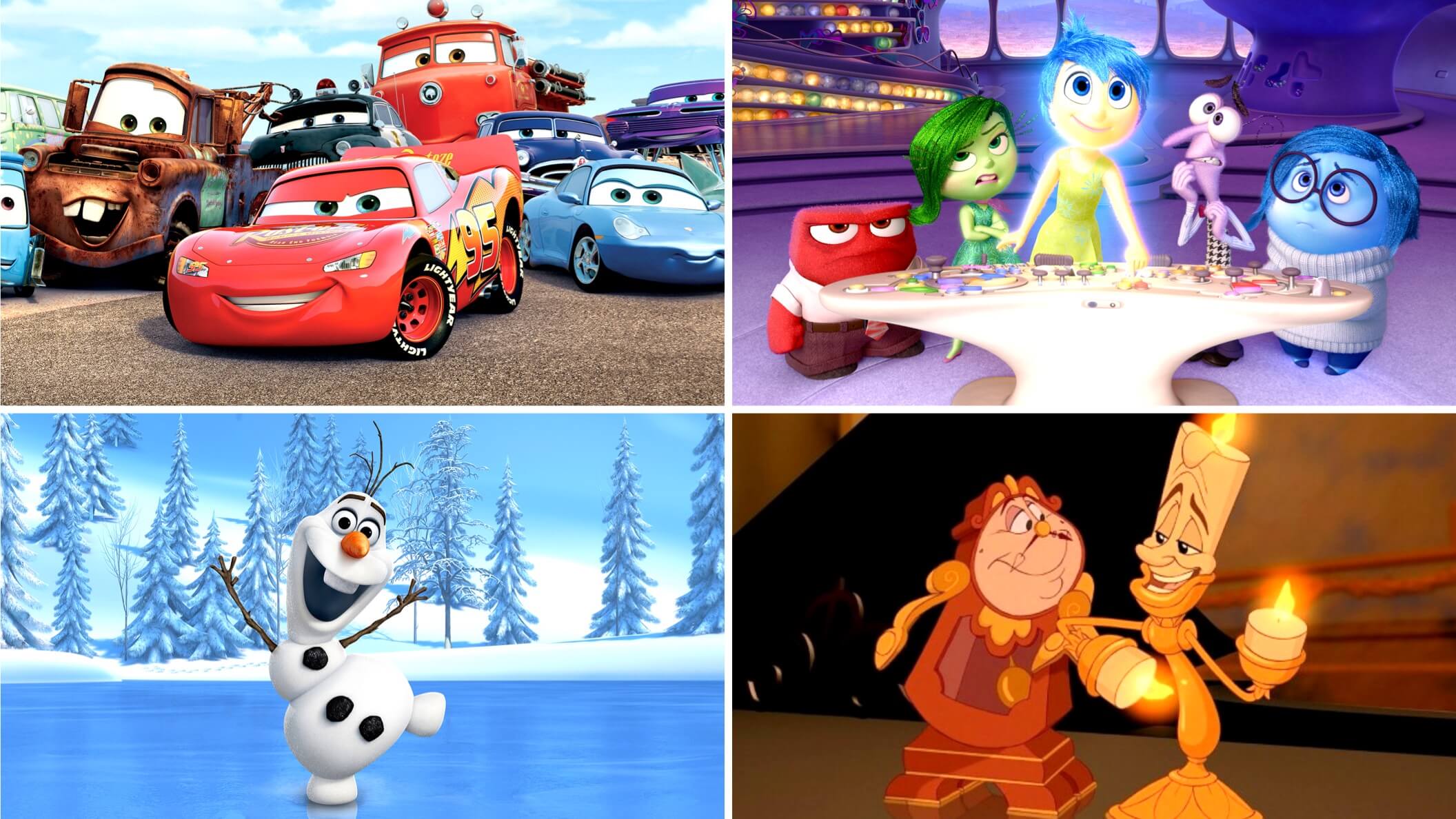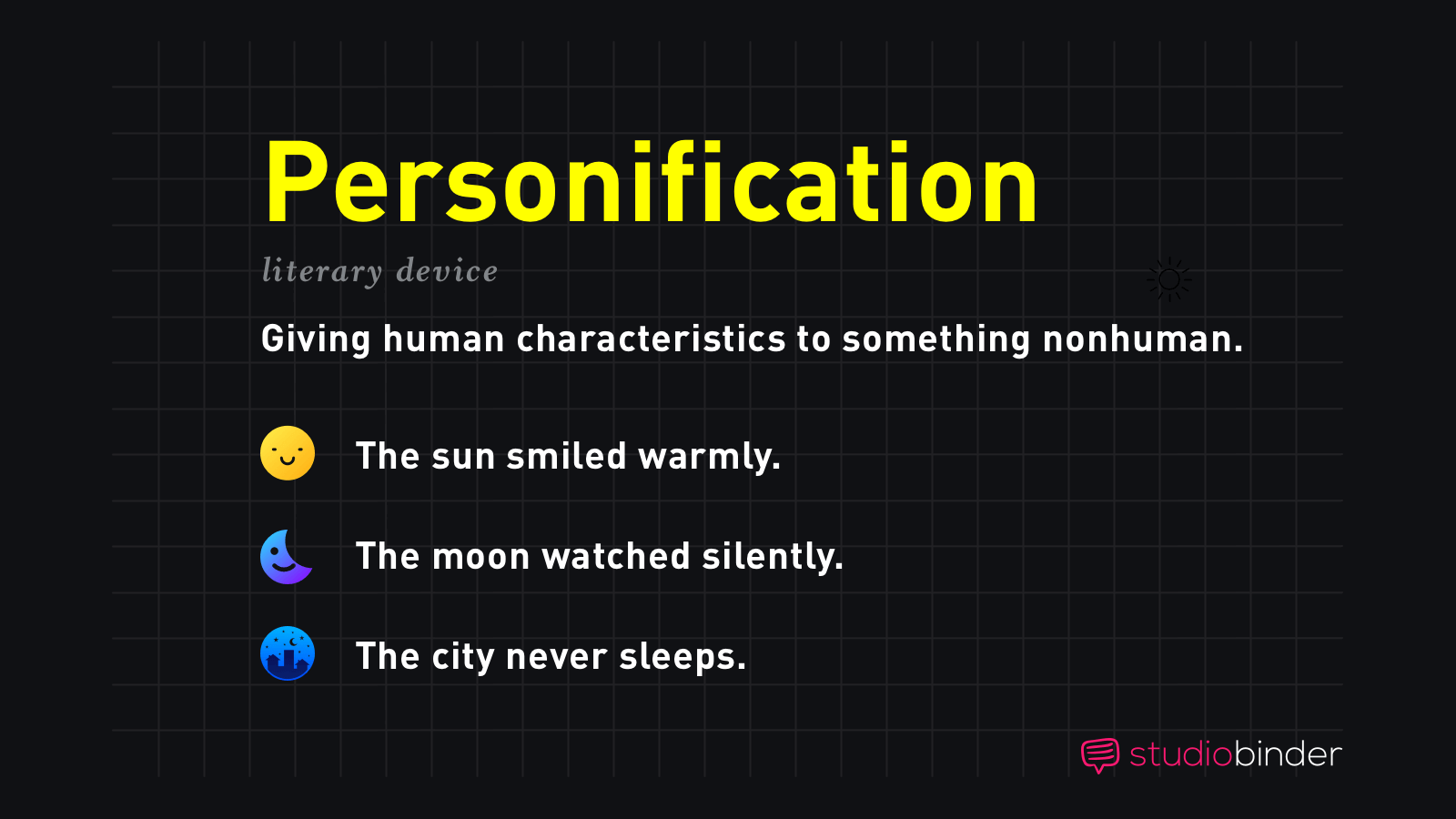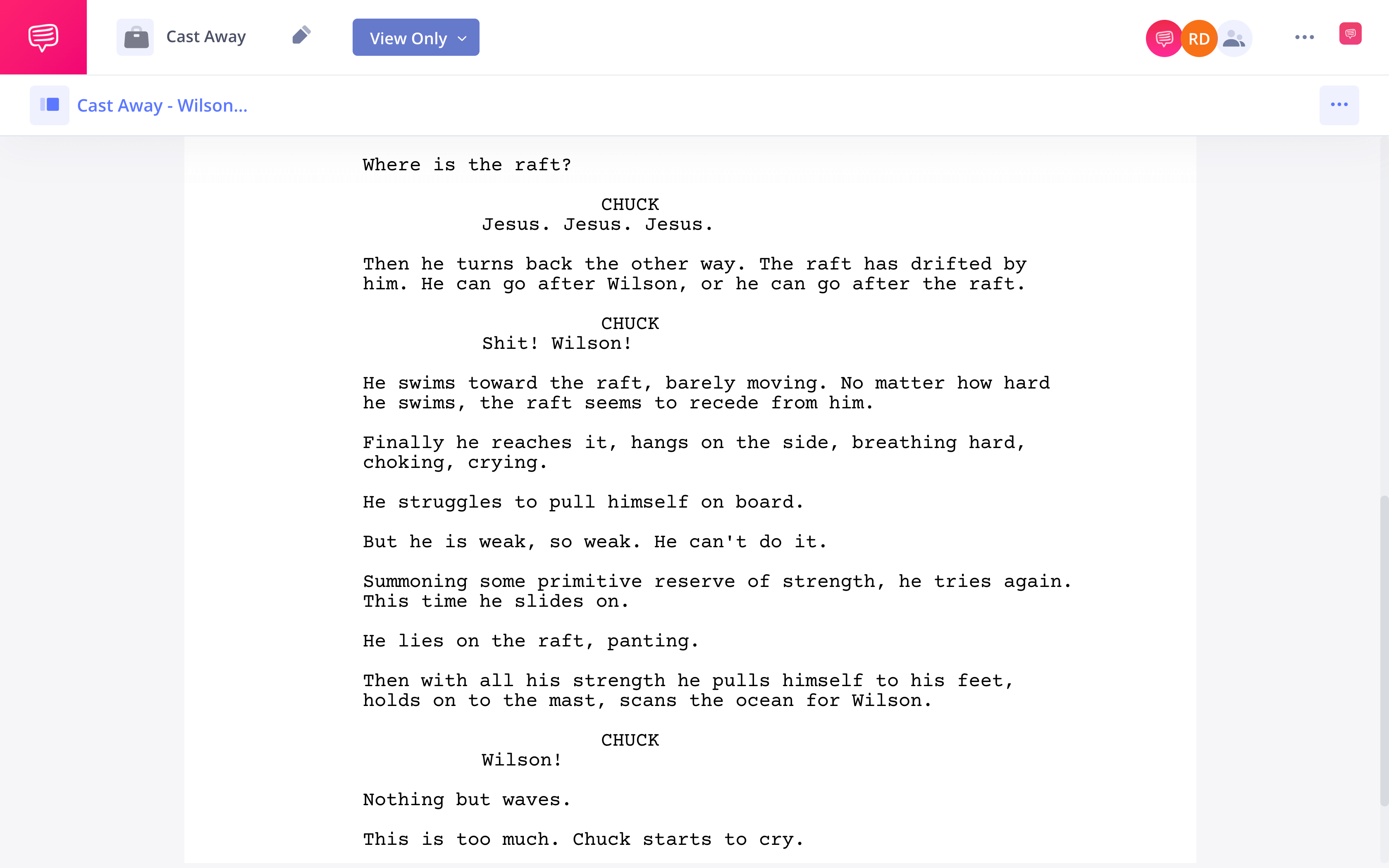Have you ever read a story or novel where the words jumped off the page? It could have been due to personification. In fact, that first line you just read was an example of personification. Personification is an incredibly useful literary device that is used in sophisticated literature as well as everyday language. So what is personification, and how can it be used?
What does personification mean?
Personification definition
Personification can be used for countless subjects and forms from poetry to screenwriting. But all personification falls under the same definition. Before we analyze some examples and benefits of personification, let’s establish the personification definition.
PERSONIFICATION DEFINITION
What is personification?
Personification is a type of figurative language that gives human characteristics to nonhuman things or inanimate objects. The nonhuman things can be animals, objects, or even a concept. The human characteristics given to these things can be emotion, behavior, or actions that bring nonhuman things to life.
Personification is common throughout literature and everyday speech. It can add life, energy, and animation to otherwise lifeless objects or subjects.
Why is personification used?
- Explain concepts more directly
- Energize the text
- Set the scene
Download this image for your reference
What is an example of personification
Personification examples
Before we dive a bit deeper into its function it may be a little more helpful to look at a few personification examples. Personification is used throughout literature, movies, and everyday vernacular. An example of personification are the phrases:
- “The sun smiled down on us.”
- ‘The story jumped off the page.”
- “The light danced on the surface of the water.”
You can find personification examples in multiple different parts of speech. The literary device can be applied to adjectives, verbs, and entire phrases, as you can see in these 5 personification sentences:
- The car coughed and wheezed as it pulled into the garage.
- The loquacious alley cats kept us up all night.
- The chair groaned with relief as the large man stood.
- The door’s hinges screamed as I pushed it open, alerting the rest of the room that I had entered.
- The fishing bobber happily splashed in the water.
It should come as no surprise that personification is often used in conjunction with other literary devices. A few examples:
- The photographs were our history books, regaling us with stories long gone by. (“Regaling” is personification, while the comparison of photographs to history books is a metaphor.)
- The tower reached toward the sun, taller than anything has ever been. (“Reached” is personification, and “taller than anything has ever been” is hyperbole.)
- It wasn’t a bad day’s work for the old shovel, which glistened proudly after its extensive use. (“Proudly” is personification, “Wasn’t a bad day’s work” is litotes.)
Why is personification used?
What is personification used for?
Personification is unique among literary devices in that it is a non-literal use of language that conveys thoughts and ideas. Why would a writer use language in a non-literal way?
1. Explain concepts more directly
By bringing to life nonhuman subjects or inanimate objects, concepts and ideas can be described more directly and more simply. Take, for example, the classic “birds and the bees” conversation. Personifying birds and bees simplifies the concept in a way that is easier to tell. It is also both personification and a metaphor.
2. Energize the text
In poetry and literature, personifying can energize the text by literally bringing to life rather dull and unlively subjects. Allowing trees, or animals, or even objects to interact with characters can engage a reader much more than if they were portrayed realistically.
3. Set the scene
Personifying various story elements can create evocative imagery. Personifying objects can make the world of a story appear lively or more menacing depending on how the personification is used.
Now, let’s look at what sets personification apart from other literary devices.
Examples of personification
Real-world personification examples
Personification can be found everywhere, from literature to film to fine art. Often, a great use of personification may go unnoticed; it should feel natural and in service of the story being told or the message being delivered.
Let’s look at some of the best examples of personification, beginning with literature, including novels, short stories, and poetry.
- “Five-fingered ferns hung over the water and dropped spray from their fingertips.” John Steinbeck, “Flight”
- “The heart wants what it wants– or else it does not care.” Emily Dickinson in a letter to Mary Bowles
- “Peace had deserted Devon.” John Knowles, “A Separate Peace”
- “Arise, fair sun, and kill the envious moon who is already sick and pale with grief.” William Shakespeare, “Romeo and Juliet”
- “Hill House, not sane, stood by itself against its hills.” Shirley Jackson, “The Haunting of Hill House”
- “Michaelmas daisies greeted and razzled from a little Sèvres vase she and Austin found together.”
Thomas Pynchon, “Gravity’s Rainbow”
As you can see, personification in literature can be subtle and quick, or be the backbone of an entire sentence. Now, let’s look at personification in music:
- “The drone of flying engines is a song so wild and blue,”
Joni Mitchell, “Amelia” - “And so today, my world it smiles,” Led Zeppelin, “Thank You”
- “The high yellow moon won’t come out to play,” Bob Marley, “Concrete Jungle”
Of course, personification can be found outside of art as well. Some of our most common everyday phrases use the literary device.
- Actions speak louder than words.
- Time marches on.
- Opportunity is knocking at your door.
Last but not least, let's talk about personification in film. We’ll get more into this later, but personification does not refer to movies where inanimate objects literally come to life (like in most Disney animated films)– that is anthropomorphism.
- Wilson the Volleyball in Cast Away — Chuck ascribes human qualities to a volleyball, which is not actually alive.
- Life of Pi — Pi often gives the ocean and the tiger he’s on the ship with human qualities.
- Michael in Halloween— This is a different form of personification, where a human represents an abstract idea. Here, Michael is the personification of evil.
Film is unique because it doesn't only use personification to relate better to an audience or more simply explain an idea. In film, it has allowed filmmakers to literally make characters out of nonhuman subjects. Where would Mulan be without Mushu? Or Frozen without Olaf?
Being able to personify these characters has and continues to open the doors for memorable characters on the big screen.
Let’s look a little more closely at personification in the movie Cast Away. Its use here is pivotal to Chuck’s character development. As Chuck spends more time alone on the island, he starts to lose grasp of his sanity. His personification of Wilson is the most clear representation of that.
But Wilson isn’t just a symptom of a loosened grip on reality. Wilson is crucial to Chuck’s will to keep fighting. In other words, for a large chunk of the film Wilson is his only friend.
We can see Wilson’s importance when Chuck loses him. Take a look at the iconic scene in the screenplay, which we imported into StudioBinder’s screenwriting software:
Example of persoification in film: Wilson!
Chuck’s loss here is his nadir, and the break into act 3 (if we’re going by the three act structure). Without the volleyball that he’s imbued with human characteristics, Chuck is completely lost.
As we mentioned with anthropomorphism, personification can be mixed up with other devices. Let’s clear up the confusion.
PERSONIFICATION VS ANTHROPOMORPHISM VS METAPHOR
Personification vs other devices
There are boatloads of literary devices out there, so it should come as no surprise that personification can sometimes be confused with a few other terms. Time to right those wrongs.
Anthropomorphism vs personification
Anthropomorphism is perhaps the closest in meaning to personification. Both ascribe human characteristics onto inanimate or non-human objects. The crucial difference is that anthropomorphism is not figurative.
Anthropomorphism typically pops up in fairytales and fantasy. Talking squirrels, walking dressers, boxing lamps– these are all examples of anthropomorphism, not personification.
Metaphor vs personification
Believe it or not, personification actually has more overlap with metaphor than it does with anthropomorphism. Much of personification can be categorized as an implied metaphor.
An implied metaphor compares a subject to another object without explicitly naming that object.
So take a look at this use of personification: “The alarm clock screamed at me to wake up.” This is also an implied metaphor because we are implicitly comparing the metaphor to a human. To make this a more traditional metaphor, we could write, “The alarm clock was a drill sergeant, screaming at me to wake up.” Now the comparison is explicit.
Not all personification is an implied metaphor, and not all implied metaphors are personification. “The suitor was shattered by her rejection” is an implied metaphor comparing the suitor to glass, but it isn’t personification.
Personification vs onomatopoeia
There’s less overlap here. Onomatopoeia refers to words which sound like what they are describing. Think of words like moo, cluck, sizzle, and boom.
Onomatopoeia might be used within personification, like “The backed-up toilet gargled,” but the two terms have distinct and separate meanings.
Personification is an extremely powerful literary device, painting pictures and underscoring character traits with just a few words. Give it a try in your writing.
Related Posts
UP NEXT
Explore more literary devices
Personification is just one of many literary devices and types of figurative language, including onomatopoeia, connotation, and allegory. If you're a writer and want to develop your craft fully, do yourself a favor and continue this exploration. The next article on literary devices is a gateway to many of these tools that help add substance and style to any type of written work.


